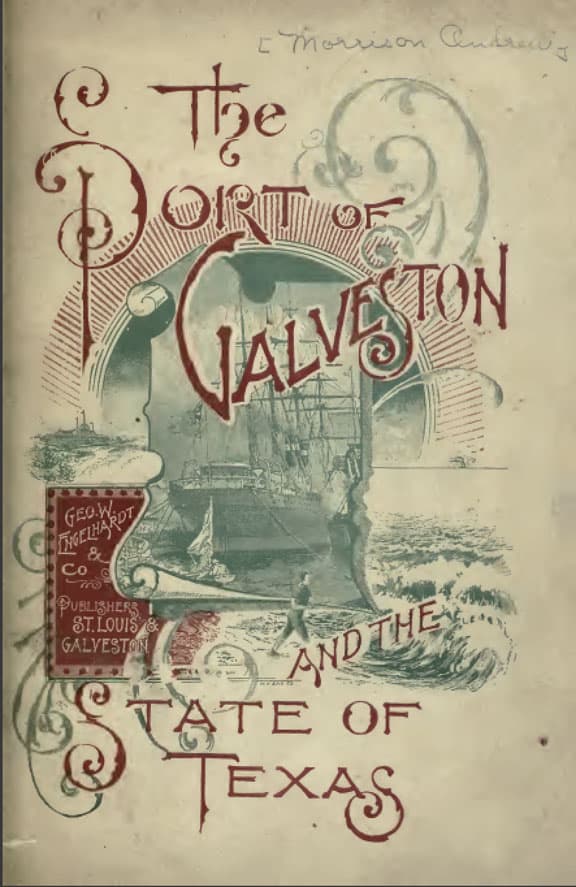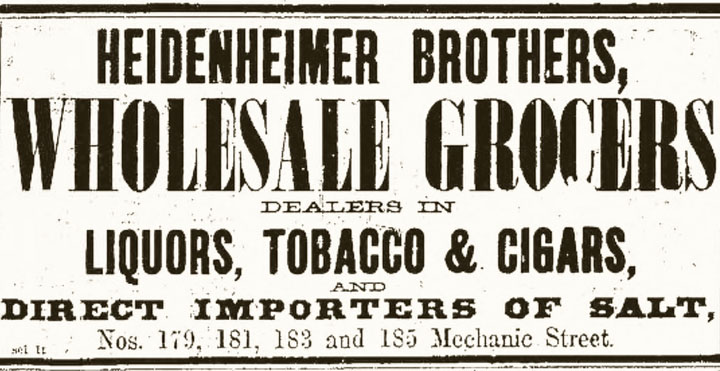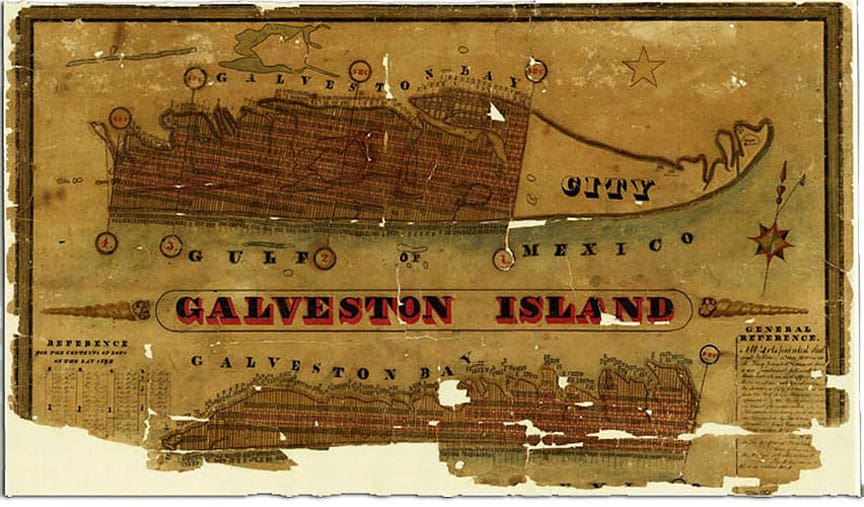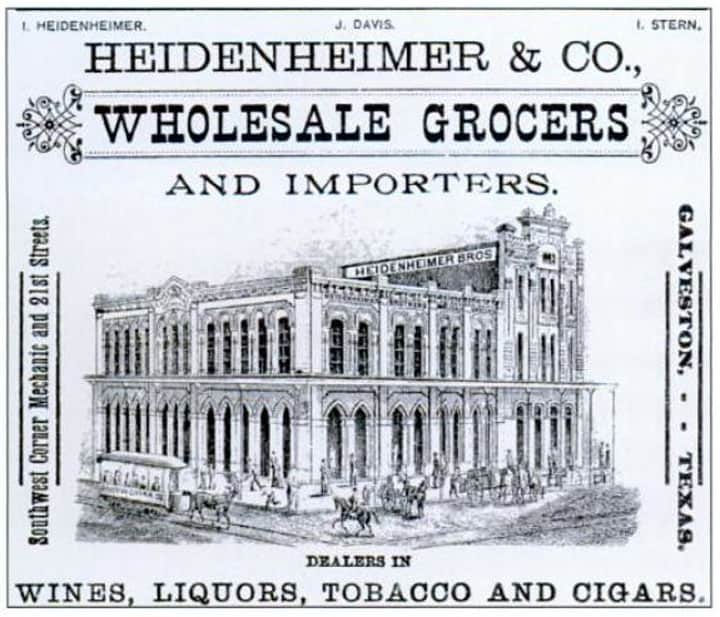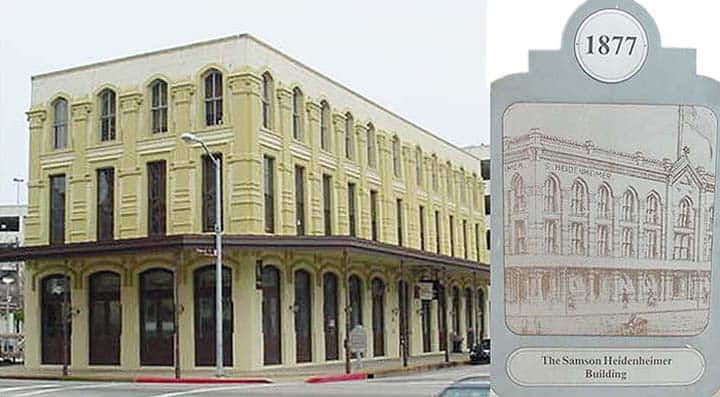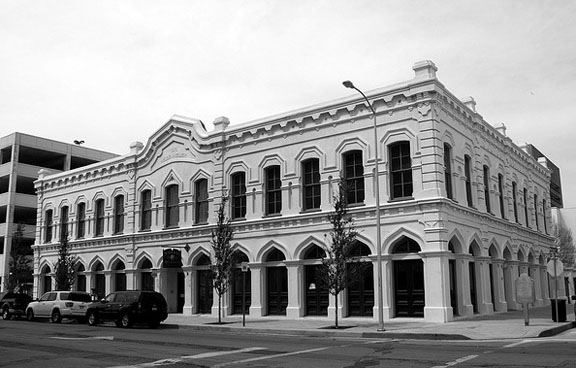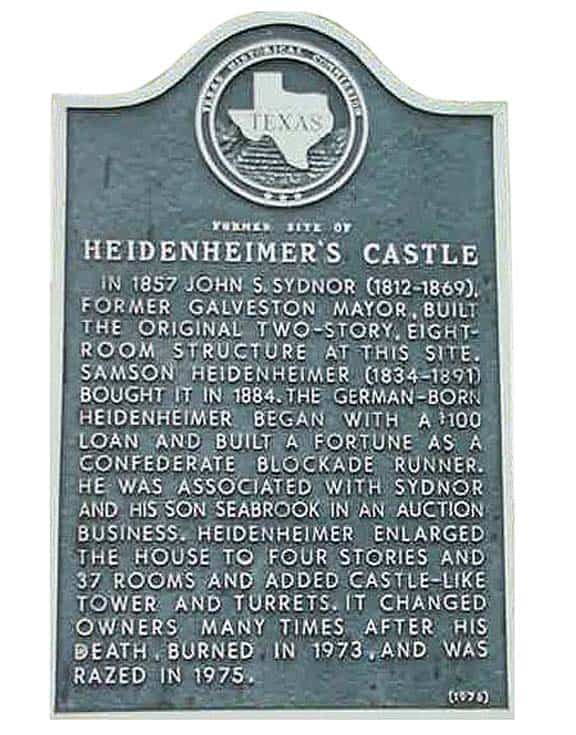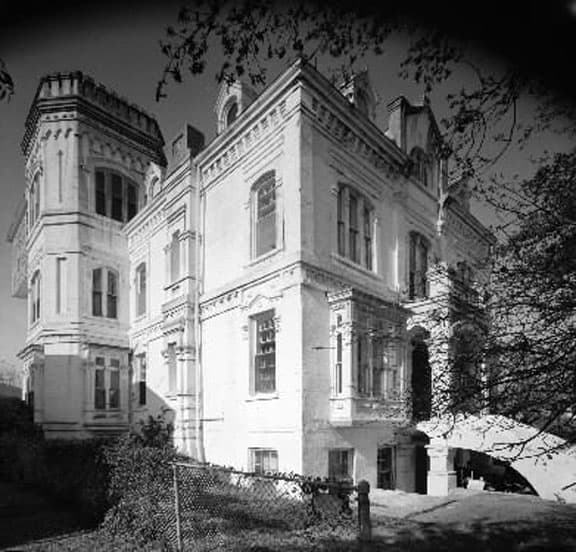Heidenheimer Bitters – Galveston, Texas
Sampson, Abraham and Isaac Heidenheimer
![]() Long-time Texas bottle collector Doyle Bailey recently sent me a very short list of Texas bitters (see Texas Bitters list) that noted a paper labeled, Heidenheimer Bitters from Galveston, Texas. I have never heard of this bitters or the name Heidenheimer and was surprised that the product came from Galveston. I also see no reference in any of the Ring and Ham listings.
Long-time Texas bottle collector Doyle Bailey recently sent me a very short list of Texas bitters (see Texas Bitters list) that noted a paper labeled, Heidenheimer Bitters from Galveston, Texas. I have never heard of this bitters or the name Heidenheimer and was surprised that the product came from Galveston. I also see no reference in any of the Ring and Ham listings.
Galveston is an incredible place if you have never been there before. Lots of history and very beautiful. The cover at the top of this post is emblematic of this island city that is so dwarfed by Houston.
I might as well tell you now, I can not find any pictures of the bottle or advertising that confirms the Heidenheimer Bitters product and I am working feverishly in that area. Stay tuned. Once we find confirmation, I will ask Bill Ham for a number.
GALVESTON ISLAND
Galveston island (see 1837 map above) was named after Bernardo de Gálvez y Madrid, Count of Gálvez, Galveston’s first European settlements on the island were constructed around 1816. The Port of Galveston was established in 1825 by the Congress of Mexico following its successful independence from Spain. The city served as the main port for the Texas Navy during the Texas Revolution and later served as the capital of the Republic of Texas.
During the 19th century, Galveston became a major U.S. commercial center and one of the largest ports in the United States. Galveston is known for the hurricane that devastated the city in 1900. The natural disaster that followed still counts as the deadliest in American history. (source Wikipedia)
HEIDENHEIMER
The story starts with the Heidenheimer’s in Archshofen, Germany. The family house including the parents and sons Hermann, David, Loeb and Joseph Heidenheimer was located in the front of the Tauber bridge. Between 1859 and 1891, seven men from the family emigrated to North America. The first to arrive in 1859, is Samson, a 17 year old butcher and son of David Heidenheimer, who settles in Galveston, Texas with property valued at 200 gulden.
When three of his uncles, as well as his two older brothers, Moses and Isaac, moved to North America in 1879, 16 year old Hermann then followed. The Heidenheimers were young, single Jewish men leaving for the United States to raise a family and to build a business. Their parents provided them with a small amount of start-up capital.
HEIDENHEIMER BROTHERS | HEIDENHEIMER & CO.
The Heidenheimer Brothers operated one of the largest wholesale grocery companies in Texas at one time. According to local tradition, Sampson Heidenheimer (1834-1891) started the business in Galveston, prior to the Civil War, as a poor German youth working as a street vendor with only $2 in his pocket. When the Civil War broke out, he was the possessor of a few hundred dollars and managed to keep himself out of the army. He increased his wealth by judicious speculations and made one or two ventures in a small way in running the blockade with schooners loaded with cotton, which then brought fabulous prices.
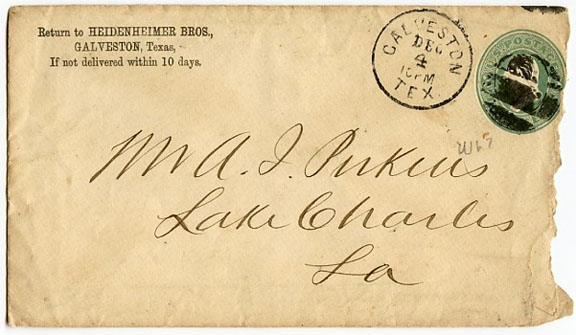
Heidenheimer Brothers postal envelope – Not dated, but this type of postal cover was manufactured between 1874 and 1886 – ebay
According to Galveston records, the company was firmly established in 1867, when the other brothers moved to Galveston from Virginia City, Montana. The other brothers were named Abraham Heidenheimer and Isaac Heidenheimer. I am not sure about the Virginia City part as it seems like they would have come straight from Germany to Galveston. In 1883, the company name changed to Heidenheimer and Company, and by 1887, Isaac was senior partner. Isaac also ran the firm of Hawley & Heidenheimer, importers of coffee and salt; co-owned a grocery store in Austin called Nelson, Davis and Company; owned a flour mill in Kansas; and owned a sugar plantation in Louisiana.
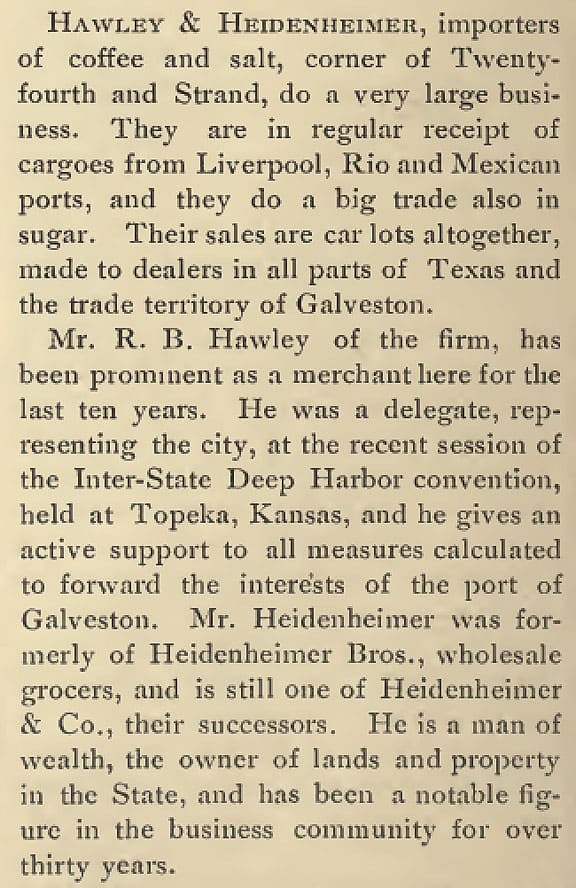
Later Hawley and Heidenheimer clip – The port of Galveston and the State of Texas-1890 (see book cover at the top of this post)
SAMPSON HEIDENHEIMER BUILDING
In 1877, Sampson Heidenheimer built what is now called the Heidenheimer-Hunter Building (pictured above) in Galveston, which housed various wholesale groceries, until the building was purchased by Fred Hunter in 1920. Sampson also served as director of the Gulf, Colorado, and Santa Fe Railroad. The town of Heidenheimer, Texas, grew up around railway station for the Santa Fe line and was thus named for the railroad’s director.
Sources: Jenkins, Mary. “Barker Center gets 19th Century grocery papers.” On Campus, Feb. 28-Mar. 6, 1983, p. 16., Heidenheimer Brothers Business Records, 1869-1881, Dolph Briscoe Center for American History, The University of Texas at Austin.
The Heidenheimer Brothers Marine Building
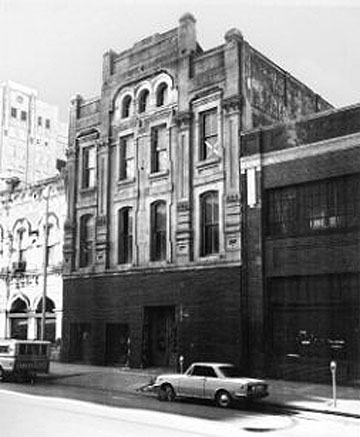
The Heidenheimer Brothers Marine Building addition – Galveston, Texas. You can see this addition in the early advertisement further above.
The Heidenheimer Brothers Marine Building – Built in 1877 by German immigrant Samson Heidenheimer, housed a number of wholesale and retail businesses. According to local tradition, Heidenheimer began business in Galveston prior to the Civil War as a street vendor, and during the war built up a lucrative business by dealing in cotton and blockade running. With his brothers, he opened a wholesale grocery business which operated under various names at this location until 1904. Suderman & Dolson Stevedores, a division of the Morgan Steamship Line, moved here in 1904, and during their occupancy the building was known as the Marine Building. The structure was sold to a New Orleans businessman, who lost it to a Houston bank in 1933. A member of the Heidenheimer family bought the property in 1941, and it changed hands several times in the succeeding years. An important commercial and historic landmark, the building underwent restoration in 1984-85. The two-story structure is of Victorian-era styling, with Italianate Hood molds on the second level and ogee arches on the first story. Features include corbelled detail and exaggerated style elements incorporated into the stuccoed masonry. Recorded Texas Historic Landmark – 1986
HEIDENHEIMER CASTLE
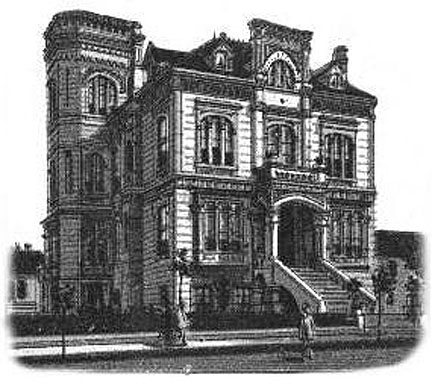 Heidenheimer’s Castle – In 1857, John S Sydnor (1812 – 1869), former Galveston Mayor, built the original two story, eight room structure at this site. Samson Heidenheimer (1834 – 1891) bought it in 1884. The German-born Heidenheimer began with a $100 loan and built a fortune as a Confederate blockade runner. He was associated with Sydnor and his son Seabrook in an auction business. Heidenheimer enlarged the house to four stories and 37 rooms and added castle-like tower and turrets (pictured to left and further below). It changed owners many times after his death. Burned in 1973, and was razed in 1975.
Heidenheimer’s Castle – In 1857, John S Sydnor (1812 – 1869), former Galveston Mayor, built the original two story, eight room structure at this site. Samson Heidenheimer (1834 – 1891) bought it in 1884. The German-born Heidenheimer began with a $100 loan and built a fortune as a Confederate blockade runner. He was associated with Sydnor and his son Seabrook in an auction business. Heidenheimer enlarged the house to four stories and 37 rooms and added castle-like tower and turrets (pictured to left and further below). It changed owners many times after his death. Burned in 1973, and was razed in 1975.

